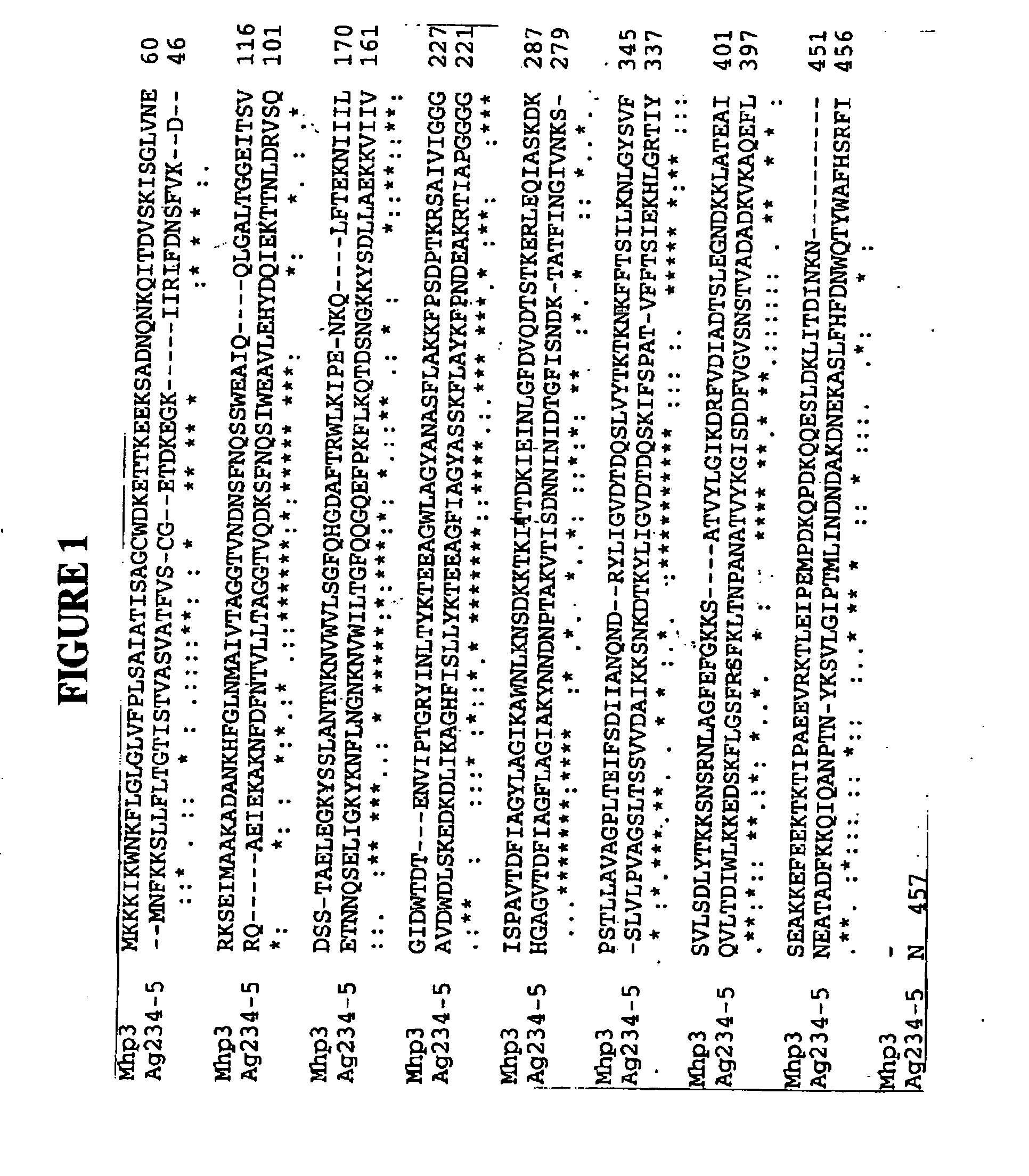Nucleic acids and proteins of the mycoplasma hyopneumoniae mhp3 gene and uses thereof
- Summary
- Abstract
- Description
- Claims
- Application Information
AI Technical Summary
Benefits of technology
Problems solved by technology
Method used
Image
Examples
examples
Isolation of M. hyopneumoniae Chromosomal DNA
[0116] Genomic DNA from M. hyopneumoniae was isolated by the method of Dybvig and Alderete (Plasmid, 20:33-41; 1988), in which cells were harvested by centrifugation (10 min. at 6000 g at 4° C.), suspended in phosphate-buffered saline, and lysed by addition of 0.1 volume 10% sodium dodecyl sulfate. The lysate was extracted with a mixture of phenol, chloroform, and isoamyl alcohol (25:24:1) saturated with Tris-HCl. The aqueous phase was extracted with chloroform, and nucleic acids precipitated by the addition of 0.1 volume of 3M sodium acetate and 2 volumes of ice-cold ethanol. After incubation at −20° C. for 1 hr, nucleic acids were recovered by centrifugation for 10 min in a microcentrifuge. Nucleic acids were resuspended in water containing 20 ug of RNase A / mL, and samples were stored at −20° C.
Molecular Cloning of M. hyopneumoniae mhp3
[0117] Degenerate oligonucleotide primers KWK40, KWK41, KWK42, KWK43, KWK42RC, and KWK43RC (SEQ ID ...
PUM
| Property | Measurement | Unit |
|---|---|---|
| Solubility (mass) | aaaaa | aaaaa |
Abstract
Description
Claims
Application Information
 Login to View More
Login to View More - R&D
- Intellectual Property
- Life Sciences
- Materials
- Tech Scout
- Unparalleled Data Quality
- Higher Quality Content
- 60% Fewer Hallucinations
Browse by: Latest US Patents, China's latest patents, Technical Efficacy Thesaurus, Application Domain, Technology Topic, Popular Technical Reports.
© 2025 PatSnap. All rights reserved.Legal|Privacy policy|Modern Slavery Act Transparency Statement|Sitemap|About US| Contact US: help@patsnap.com


